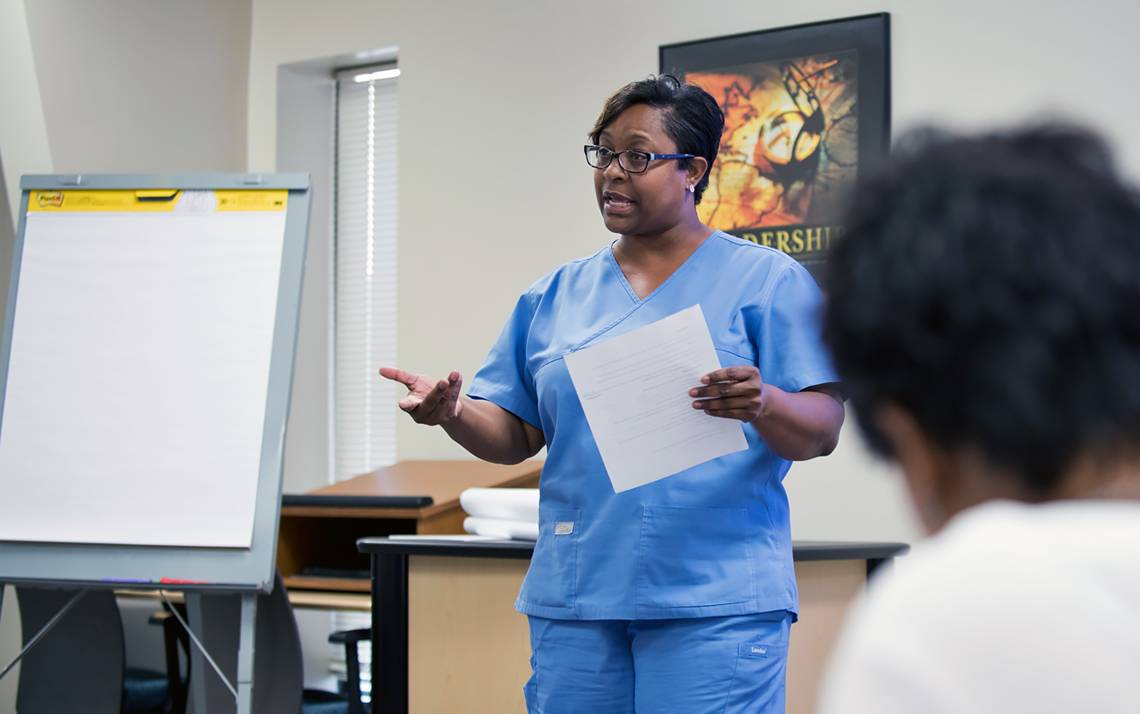How to Knock a Presentation Out of the Park
Six tips for being confident and well prepared in front of an audience

Every month, Karla Washington stands in front of students, managers or visiting colleagues from other hospitals and talks about proper ways to wash hands and don masks and shoe covers.
As a quality assurance technician for Duke Pharmacy Administration, she is the expert on pharmacy hand hygiene. But instead of exuding confidence during presentations, Washington said she feels like she wants to faint and worries about forgetting what to say.
“Standing up and presenting is not one of the things I like to do,” Washington said. “I know what I’m talking about, but I want to be able to convey that and be more relaxed and confident.”
To help calm her nerves, Washington enrolled in “Essential Presentation Skills,” one of 250 work skills and leadership courses offered by Duke’s Learning & Organization Development (L&OD) throughout the year. Joy Birmingham, L&OD’s assistant director of professional development, led Washington’s class in the fall and offered these tips on how to deliver a successful presentation:
Perfection is overrated
Don’t memorize a presentation word for word. Memorization can make a presentation less personable and places additional pressure on presenters. “Forget the first word and you can’t find the rest,” Birmingham said.
Audience behavior is out of your control
Is someone checking a cell phone? Don’t let audience actions throw you off your game. Step in front of an audience knowing people engage with presentations differently. “Don’t read somebody’s face and make meaning of it,” Birmingham said. “You can’t make those kinds of assumptions.”
Know the audience
Look into audience demographics and attitudes as you create a presentation. What do people want to learn and how much do they know about the topic? Send participants an online survey or call them for content or focus areas. “You don’t want to target your audience as knowing nothing, because what if they do?” Birmingham said.
What’s the purpose?
Determine if a presentation is meant to inform, demonstrate, excite or persuade. “There is no reason to do a presentation unless you want people to do something differently,” Birmingham said. “We want to present a call to action of some sort.”
Don’t stand still
Use movement to capture attention, not distract. Walk around a room but make sure to plant your feet from time to time. Make eye contact for a few seconds with individuals. “Words are words, but your body is actually conveying what’s in your mind,” Birmingham said.
Involve the audience
Use visual aids such as interesting photos and be conversational instead of reading from slides or handouts. “You are the center of your presentation,” Birmingham said. “The visual aids are only to support what you’ve already said.”